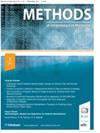使用三维(3D)数字模型进行牙尖顶成角的可靠性:体外初步研究。
IF 1.8
4区 医学
Q3 COMPUTER SCIENCE, INFORMATION SYSTEMS
引用次数: 0
摘要
背景目前,人工智能正在逐步应用于临床数据分析和临床决策。牙尖顶角度为咀嚼效率和假体安全问题提供了有价值的见解。人工智能计算牙尖角具有潜在的重要价值,但目前还没有可靠的数字测量方法。目的建立一种测量牙尖顶角的数字化方法,并研究评分者之间和评分者内部的可靠性。方法用角度计在21个石膏模型上测量第一磨牙的两个牙尖顶角(α角和β角),并用CEREC Bluecam三维口腔扫描仪扫描后,用PicPick软件在相应的数字模型上测量。计算平均值±标准差以及组内相关系数(ICCs)和皮尔逊相关系数(PCCs),并进行配对样本t检验。结果角度α为139.19°±13.86°,角度β为19.25°±6.86°。当检查者有经验时,两种方法之间存在非常强的正相关性(r>0.914;p0.20),使用数字方法测量的牙尖角度的PCC和ICC显示,16个值中有15个高于在传统石膏模上测量的相应值。然而,两种测量方法在两个不同时间点由缺乏经验的检查员重复测量角度β时,显示出弱正相关(r<0.501)和显著差异(p=0.00)。结论使用3D数字模型进行ss尖瓣成角是一种临床选择,与使用角度计测量石膏模型相比,似乎可以提高尖瓣成角度的可靠性。在使用数字模型测量小尖角时,评分者内部的变异性仍然很明显。本文章由计算机程序翻译,如有差异,请以英文原文为准。
Reliability of cusp angulation using three-dimensional (3D) digital models:A Preliminary In Vitro Study.
Background At present, artificial intelligence (AI) is incrementally used in clinical data analysis and clinical decision-making. Dental cusp angulation provide valuable insight into chewing efficiency and prosthesis safety issues. AI-enable computing cusp angles have potential important value but there is no reliable digital measurement method at present. Objectives To establish a digital method for measuring cusp angles and investigate the inter-rater and intra-rater reliability. Methods Two cusp angles (angle α and angle β) of the first molar were measured on 21 plaster casts using a goniometer, and on their corresponding digital models using PicPick software after scanning with a CEREC Bluecam three-dimensional (3D) intraoral scanner. Means±standard deviations as well as intraclass correlation coefficients (ICCs) and Pearson's correlation coefficients (PCCs) were calculated and paired sample t-test was carried out. Results Angle α was 139.19°±13.86°, angle β was 19.25°±6.86°. A very strong positive correlation between the two methods was found when the examiner was experienced (r>0.914; p<0.05), and no significant difference between the two methods was found using the paired sample t-test (p>0.20). For inter-rater and intra-rater assessments, the PCC and ICC of the cusp angulation using the digital method showed that 15 of 16 values were higher than the corresponding values measured on traditional plaster casts. However, both measurement methods showed weak positive correlation (r<0.501) and significant differences (p=0.00) for repeated measurements of angle β at two different time points by an inexperienced examiner. Conclusionss Cusp angulation using 3D digital models was a clinical option and appeared to improve the reliability of cusp angulation compared with measuring plaster casts using a goniometer. Intra-rater variability was still evident in measuring small cusp angles using the digital model.
求助全文
通过发布文献求助,成功后即可免费获取论文全文。
去求助
来源期刊

Methods of Information in Medicine
医学-计算机:信息系统
CiteScore
3.70
自引率
11.80%
发文量
33
审稿时长
6-12 weeks
期刊介绍:
Good medicine and good healthcare demand good information. Since the journal''s founding in 1962, Methods of Information in Medicine has stressed the methodology and scientific fundamentals of organizing, representing and analyzing data, information and knowledge in biomedicine and health care. Covering publications in the fields of biomedical and health informatics, medical biometry, and epidemiology, the journal publishes original papers, reviews, reports, opinion papers, editorials, and letters to the editor. From time to time, the journal publishes articles on particular focus themes as part of a journal''s issue.
 求助内容:
求助内容: 应助结果提醒方式:
应助结果提醒方式:


